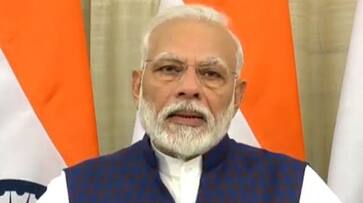PM Narendra Modi, himself an avid technology user has made the life of the common man simpler with its help. FM Nirmala Sitharaman allocating Rs 6k crore to BharatNet programme should come as the latest confirmation of Modi’s commitment to use technology for a better, simpler world
Bengaluru: Technology can easily be used as a tool to better the life of the common man.
And this, none has better understood than the Prime Minister Narendra Modi himself.
For a man who consistently uses technology to keep in touch with the people, elucidate their responses and make the world a better place to live in, finance minister Nirmala Sitharaman’s announcement to allocate Rs 6000 crore to BharatNet programme (where 250 thousand villages are upgraded digitally) with a view to boost digital connectivity, should only come as the latest confirmation of how Modi intends to make the digital world an egalitarian concept.
Also Read: Key takeaways from Union budget 2020
Himself an ardent and avid technology user, Modi believes that it makes life simple, better handling of resources, and most importantly, bridging the gap between the common man and the ruling class.
He started the Digital India Initiative, to boost the working of government and also enable to understand the problems of the common masses, as also find solutions for them.
The Prime Minister has also effectively used technology to ease financial transactions. One good example would be the way payments are made through online transactions, thereby effectively wiping out the usage of hard cash to a great extent.
Farmers too, on the other hand, have been brought under the Digital India scheme. Crores of Indian farmers have been receiving agriculture related information through SMS.
Leveraging the power of technology to bring a positive difference in the lives of 130 crore Indians. pic.twitter.com/Eyu1qHoxip
— Narendra Modi (@narendramodi) December 18, 2018
A note on OFCs:
Fiber optic cables can transmit large amounts of data at very high speeds. That’s why the technology is widely used in internet cables. Compared to the more traditional copper wires, fiber optic cables are lighter, more flexible and able to carry a lot more data, as quoted by a website.
The invention of OFCs has revolutionised the world.
The ability to transmit data using pulses of light has opened the door for many world-changing innovations in medicine, manufacturing, and communications
Last Updated Feb 2, 2020, 10:55 AM IST









![Salman Khan sets stage on fire for Anant Ambani, Radhika Merchant pre-wedding festivities [WATCH] ATG](https://static-gi.asianetnews.com/images/01hr1hh8y86gvb4kbqgnyhc0w0/whatsapp-image-2024-03-03-at-12-24-37-pm_100x60xt.jpg)
![Pregnant Deepika Padukone dances with Ranveer Singh at Anant Ambani, Radhika Merchant pre-wedding bash [WATCH] ATG](https://static-gi.asianetnews.com/images/01hr1ffyd3nzqzgm6ba0k87vr8/whatsapp-image-2024-03-03-at-11-45-35-am_100x60xt.jpg)


